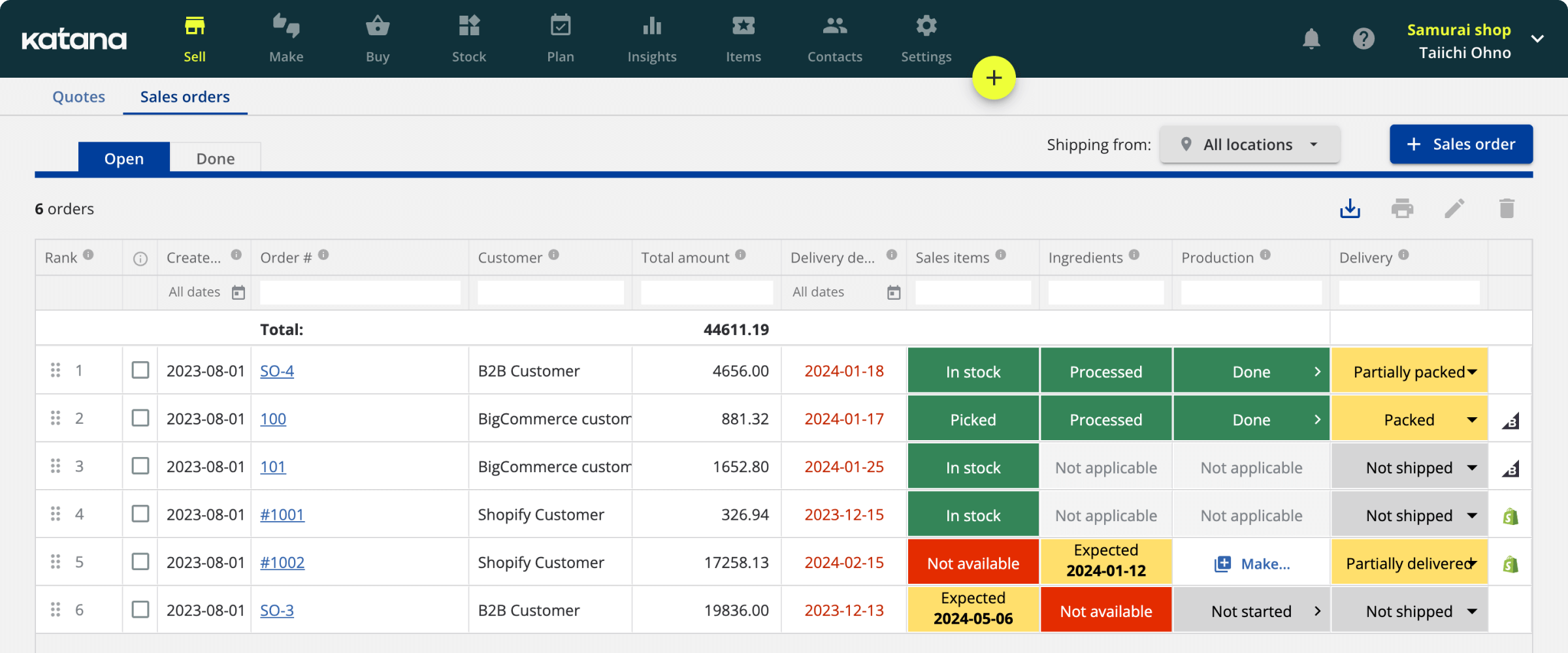What are warehouse barcoding systems?
Learn all you need to know about warehouse barcoding systems, including the benefits, and how to implement them into your current process.

Ioana Neamt
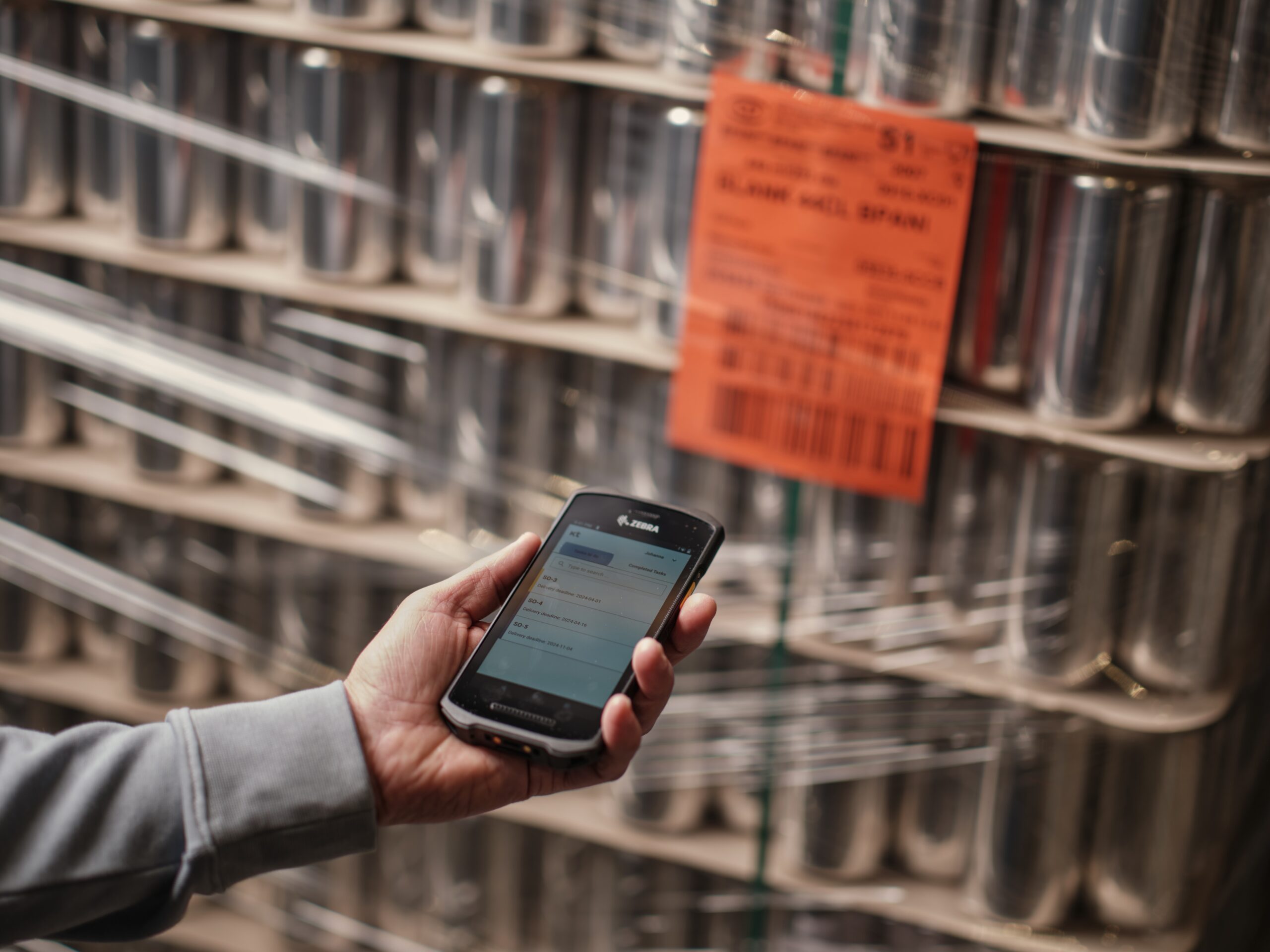
There are a lot of moving parts in a warehouse, from picking and packing to shipping and beyond. Luckily for warehouse managers, there’s no need to manually track every single item in stock anymore. Now, they can use automation technology to improve the overall speed and efficiency of warehouse operations.
One of the technologies that is taking warehousing operations by storm is barcoding systems. They’re an efficient way to scan, track, and manage inventory as it moves through a warehouse. Read on to learn what a barcode inventory system is in more detail, and how you can implement one in your own warehouse.
What is a warehouse barcoding system?
A warehouse barcode inventory system is a technology that uses barcodes and scanning devices to both track and manage inventory as it moves through a warehouse. They’re a major aspect of a modern warehouse management system, helping managers accurately track goods from the moment they’re received to shipped.
The key parts of a warehouse barcoding system are:
- Barcode labels — A barcode is printed on a label and then attached to a product. Each barcode contains a unique identifier representing information about an item.
- Barcode scanners — Portable devices for warehouse staff to scan barcodes. Often wireless so they can easily move around.
- Warehouse management software (WMS) — Holding the operation together, WMS integrates with the barcoding system to update and track the status of products as they move around the warehouse.
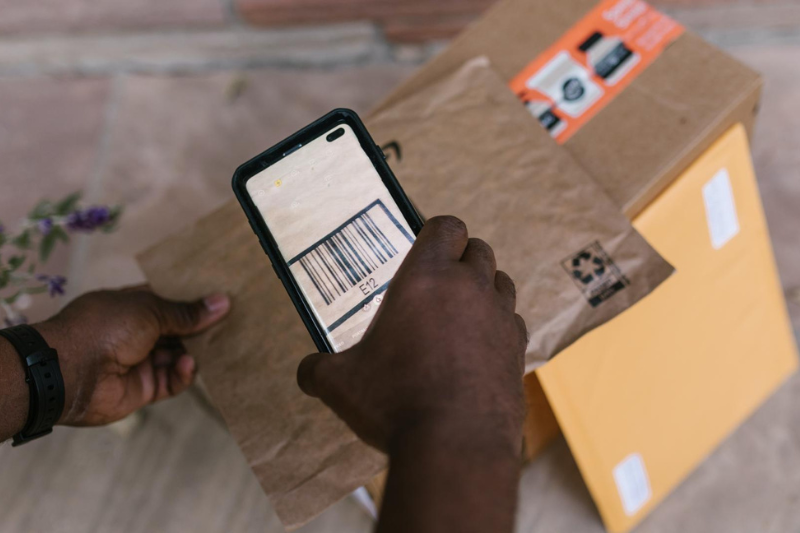
Why does your warehouse need one?
A warehouse barcode system helps to automate warehousing operations to reduce manpower and the chances of human error. Without it, deliveries will take more time, and your customers won’t be as impressed with your service. Your profits won’t be as high, either. You won’t have an accurate picture of your inventory and may fall into the trap of overstocking.
Benefits of warehouse barcoding systems
The main upsides to having a warehouse barcoding system are better accuracy and efficiency, as well as the ability to scale up as your business grows. Here’s a closer look at what you can expect when you implement your very own barcoding system into your warehouse.
Improve your inventory accuracy
Inputting product data manually is prone to errors. Without a warehouse barcode system, you could potentially face incorrect stock levels and misplaced items. With barcode technology, you can automate how you gather data. Each scan will identify the item and make sure that the inventory records you have on file are correct.
Having such precision means your business can avoid costly mistakes like shipping the wrong product or losing track of where valuable items are within your warehouse.
Boost efficiency and reduce manpower
Time is money in business. Having a warehouse barcode system can go a long way in streamlining your warehouse processes. From receiving the goods all the way to picking, packing, and shipping, barcoding speeds up the whole process.
Your warehouse staff can instantly scan an item to get all the information they need rather than manually entering data on an outdated system. With this, they can process far more orders in a shorter time frame.
Manage your inventory in real time
A warehouse barcoding system gives you real-time visibility when it comes to your inventory levels. Each and every scan immediately updates your WMS so you can get a clear picture of your stock, where your items are, and the status of all your active orders.
With all of this information at your fingertips, you can make sound decisions when it comes to your stock, like what to reorder and how to optimize your warehouse space. You can also eliminate the issues of stockouts or overstocking, which can cost serious cash.
Warehouse barcoding system from Katana
Katana inventory management software lets you track products and materials with barcodes in real time. Improve the efficiency of your warehouse management with Katana.
Trace your products with ease
If you’re in an industry where traceability is essential, like food, pharmaceuticals, or electronics, warehouse barcoding systems should be a priority. They let you track the movement of every item in your warehouse until it ships, which is a must for proper quality control and regulatory compliance.
If anything needs to be recalled, barcoding means you can instantly trace where the compromised products are so you can take them off the shelves.
Scale your business
As your business grows, you need a warehouse that can keep up with rising demands. More orders mean more stock, making your operations far more complicated to manage. Barcoding systems are scalable and will adapt to meet your needs.
So, whether you’re producing more products or upsizing your warehouse, barcoding will grow with you.
Save on storage costs
We know that the initial investment in a warehouse barcoding system can feel like a big deal. However, the long-term savings outweigh the upfront costs. By reducing stock errors and making your operations easier to manage, you can lower your overall operational costs.
You’ll spend far less time correcting costly mistakes and managing all your excess inventory. With barcodes, you’ll be able to achieve more with fewer resources which will have a positive impact on your bottom line.
Provide a better service to customers with faster delivery times
Since barcode systems help you to fulfill orders quicker, your customers will directly benefit. You can consistently deliver the right products at the right time, so you can improve the level of service you offer and boost overall customer loyalty.
Maintaining accurate stock levels and reducing how long it takes you to process orders means you can meet and even exceed customer demands. You’ll receive fewer complaints and returns, meaning you’ll enjoy far higher profit margins in the long term.
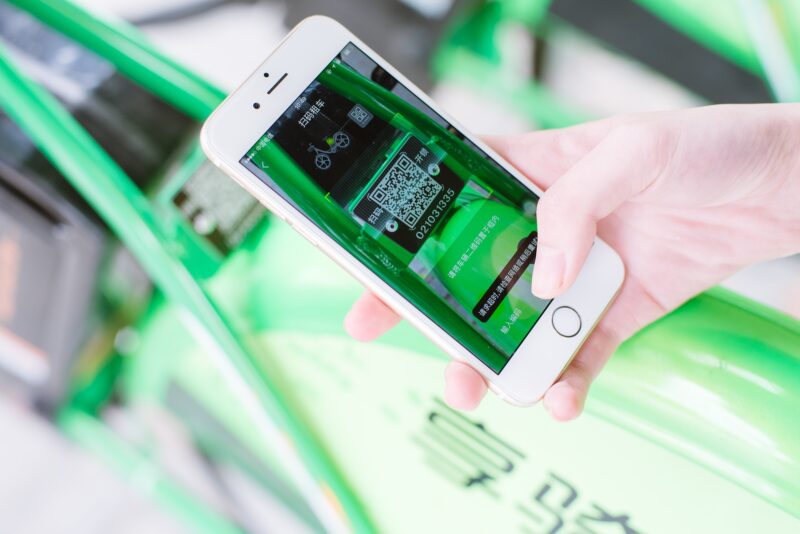
How to implement a warehouse barcoding system
If you’re as excited as we are about warehouse barcoding systems, you’re probably ready to see how it could work for you in practice. Here’s a quick overview of how to implement your own warehouse barcoding system.
Assess your warehousing needs
Start by assessing the current state of your warehouse operations to help you determine what you require out of your barcoding system. Identify the volume of the items you handle and the variety of products you store.
This will help you choose the right type of barcode labels and scanners you’ll need to properly implement your new system.
Choose the right equipment
Once you’ve got a good idea of your warehousing requirements, you need to choose the right barcode scanner. Let’s say your warehouse is large, and your employees need to be able to move around the whole space as they carry out their duties. Wireless scanners allow your team to stay mobile.
Combine barcoding with your WMS
Your WMS is the backbone of your barcoding system. Make sure to choose software that will integrate with all your existing systems to help you carry out real-time inventory tracking.
Thoroughly train your staff
When you implement your new warehouse barcoding system, you need to thoroughly train your staff so they understand how to use the scanners and navigate your WMS. Try hosting training sessions to keep your team up-to-date on all new features.
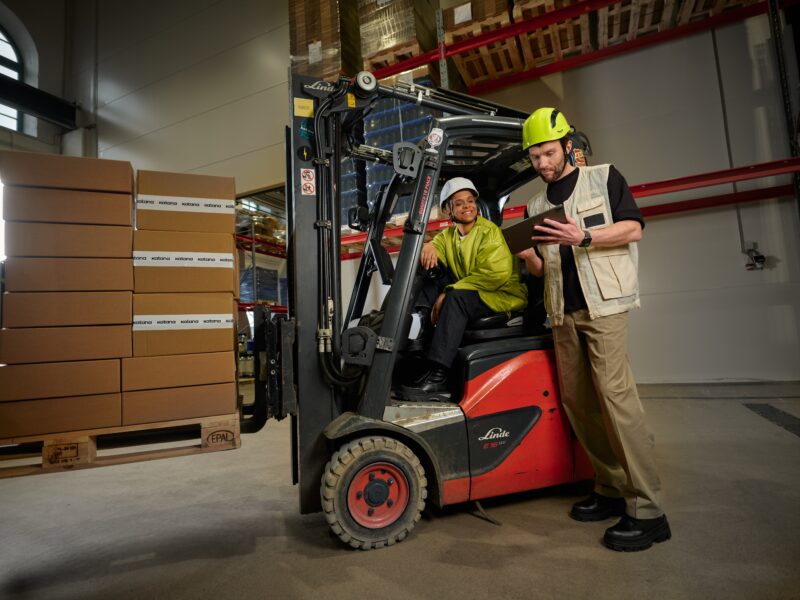
Test the system
Before jumping into using your barcode system, you must run a pilot test within your warehouse. That way, you can find any bottlenecks in your setup and fix them quickly before you go full-scale.
Roll out the system
Once you’re happy with how your barcode system is performing, implement it into your warehouse operations. Make sure that every single part of your process is covered — from receiving and storage all the way to picking and shipping.
Common technologies used for warehouse barcoding
For your barcoding system to work, you’ll need to use a combination of technologies.
Barcodes and labels
The most popular types of barcodes are:
- 1D barcodes — Known as linear barcodes. They’re made up of vertical lines and varying widths. This works best for scanning products at checkout or tracking your shipments.
- 2D barcodes — They can hold more information compared to 1D barcodes. Can store complex data like serial numbers and URLs. Ideal if you need detailed inventory management.
- RFID tags — These aren’t technically a barcode, but often used alongside them to add another layer of tracking.
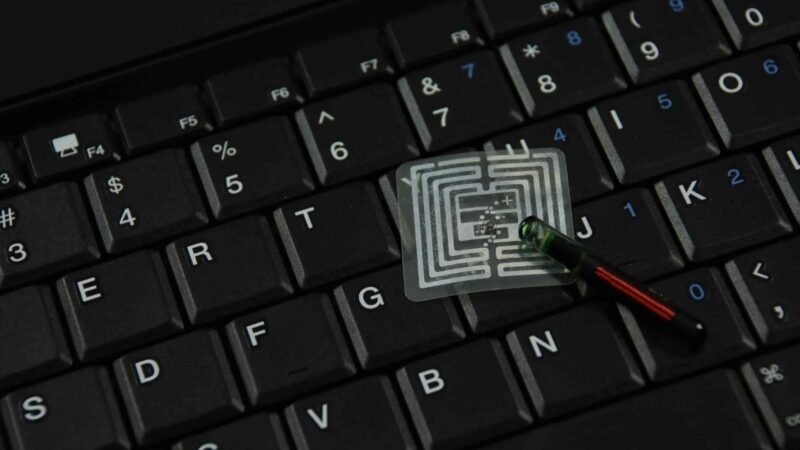
Barcode scanners
To use a barcode, you’ll need a barcode scanner. The most common types include:
- Handheld scanners — These portable devices allow your employees to scan items — no matter where they are in the warehouse. They’re available as both wired and wireless so your staff can stay flexible.
- Fixed scanners — These are installed at set points in your warehouse, automatically reading barcodes as they pass by on your conveyors or forklifts.
- Mobile computers — Combines a barcode scanner with a mobile device. This allows your team to access the WMS and scan data in real time.
WMS
Your warehouse management system will help:
- Track your inventory levels
- Manage your orders
- Analyze your inventory data
Make sure that the WMS you use can actually integrate with your current software stack and the warehouse barcode systems you choose.
How to choose the best barcoding system for your warehouse
Without putting the right barcoding system for your warehouse in place, you’ll waste precious resources and slow your operations. Read on to make sure you choose the right warehouse system for your unique needs.
Understand what your warehouse needs
Take a look at how your warehouse is working right now. Think about how many items you typically handle and the types of products you have in stock. Knowing this key information will help you on the path to finding the best barcode system.
Choose the right type of barcode
Decide whether you want to go for a 1D or 2D barcode depending on how much information you think you need to store. For instance, if you only need very basic information, 1D barcodes will probably do the trick.
Pick the right scanner
Depending on how big your warehouse is, choose scanners that best fit your workflow. Choosing handheld scanners will allow your team the flexibility to move freely. Fixed scanners work better for busier areas where you’ll need to scan a lot of items quickly.
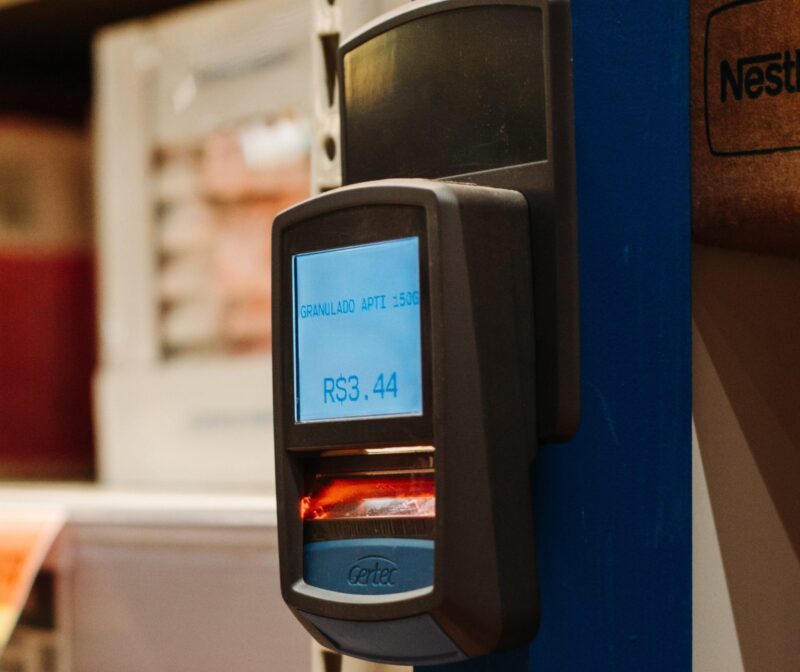
Make sure it works with your WMS
Your barcode system should work seamlessly with your WMS. Check they’re compatible before you invest in any new technology.
Consider your budget
Think about the costs you’ll face from setting up and maintaining your system. It might seem like a big investment at first, but a good warehouse barcoding system will save you money in the long term.
Best practices for warehouse barcoding systems
While a warehouse barcoding system has the ability to transform how you operate, it’s also complicated. To get the most out of your system, it’s important that you follow some of our best practices below:
- Maintain your equipment regularly — Clean the scanning lenses and print heads regularly to prevent any errors from happening.
- Standardize all your labeling — This makes sure that all your products get scanned quickly and accurately. Always make sure your barcodes are printed as clearly as possible.
- Train your warehouse staff every few months — Keep your staff educated with regular training sessions to make sure they know how to use the barcode scanners and your WMS.
- Audit your inventory — Check your inventory, making sure there are no discrepancies, and your barcoding system is in full working order.
Elevate your warehouse inventory management with Katana
Having a barcoding system in your warehouse can completely transform how you process orders for your business. It works to improve accuracy and helps you scale effortlessly as your company grows.
Katana’s inventory tracking software seamlessly integrates with a warehouse barcoding system, making your inventory management a breeze. With real-time tracking, you can keep your stock at an optimal level.
Ready to take your warehouse operations to the next level? Try a demo of Katana today and experience the difference in not only your workflow but also your bottom line!
FAQs
Katana supports both 1D and 2D barcodes, allowing you to customize your barcoding system. Whether you need simple product identification or to store serial numbers and URLs, Katana can support your warehouse as it grows.
To make sure your barcoding system is compatible with your WMS, you should start by verifying that it can integrate with the software you’re currently using. Check the specs of both before you make any purchases.

Ioana Neamt
Table of contents
Get inventory trends, news, and tips every month
Get visibility over your sales and stock
Wave goodbye to uncertainty by using Katana Cloud Inventory for total inventory control
